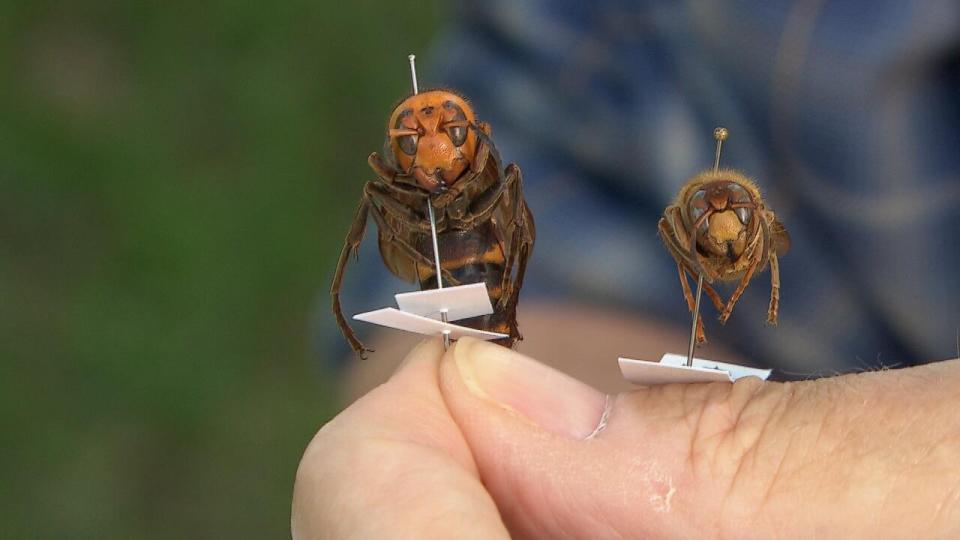Giant hornets are here — but they're not the ones you might think
Christine Moses was playing Scrabble with her husband in their Ottawa home this spring when she looked outside the window and shrieked.
"I just saw this gigantic beast crawling up the window," Moses said.
After taking a picture of the giant insect, Moses asked her husband to eliminate the intruder with a fly swatter.
She then posted the photo of the bug to a Facebook community group, in the hopes someone could identify it.
Moses soon got an answer back: it was a European hornet.

They're not 'murder hornets'
Moses isn't the only one who's come across the bigger-than-usual hornets lately.
Social media posts of European hornets have been popping up in Ottawa and across the province, with some local residents believing they've encountered so-called "murder hornets" — otherwise known as northern giant hornets, the world's largest hornet species.
The presence of northern giant hornets, which are native to Asia and have only recently been introduced to North America., became a hot topic in 2019 when authorities in Nanaimo, B.C., reported encounters with these insects.
The hornets can destroy honey bee colonies in less than 24 hours.
If they establish themselves in Ontario, they could pose a significant threat to native biodiversity and agriculture, according to the province.
The European hornet, also known as Vespa crabro, is frequently mistaken for the northern giant hornet, Vespa mandarinia.
European hornets are typically around two and a half centimetres long, while the northern giant hornet is closer to four centimetres long.
They don't pose the same threat to the local environment and are considered "naturalized" to Ontario's ecosystem, according to the Invasive Species Centre, a Sault Ste. Marie, Ont., non-profit.
There was "a burst" of giant hornet sightings in the Ottawa area between 2019 and 2020, according to David Beresford, an associate professor at Trent University's biology department and school of the environment.
"What I think happened is that's when the news story broke about those murder hornets showing up in British Columbia, I think people went out looking for them and started reporting what they saw," Beresford told CBC's Ottawa Morning last week.

'Gave me the willies'
Beresford said European hornets appear "not to cause serious problems with honey bees."
"I saw my first one last year," Beresford said. "It was girdling the stems of a mountain ash tree to get the sap, and I'd never seen the things. It kind of gave me the willies because it's an awful big animal."
"It looks the size of a flying peanut," he added.
In fact, European hornets have been in North America for 170 years, according to Rob Longair, a retired entomologist and a volunteer at The Canadian National Collection of Insects, Arachnids and Nematodes.
Longair says they have "a beautiful sort of mahogany" colour on their bodies and a dark red and brown colouring on their head and thorax, whereas northern giant hornets have a lighter-coloured head and a darker thorax.
Longair said despite recent sightings of European hornets, Ottawans might not see these giant creatures for the rest of summer because "they'll be off in the woods."
"They tend to nest in more wooded areas, and they don't tend to fly around as much. They're hunting other insects and helping us out that way. They're hunting pest insects," Longair said.


